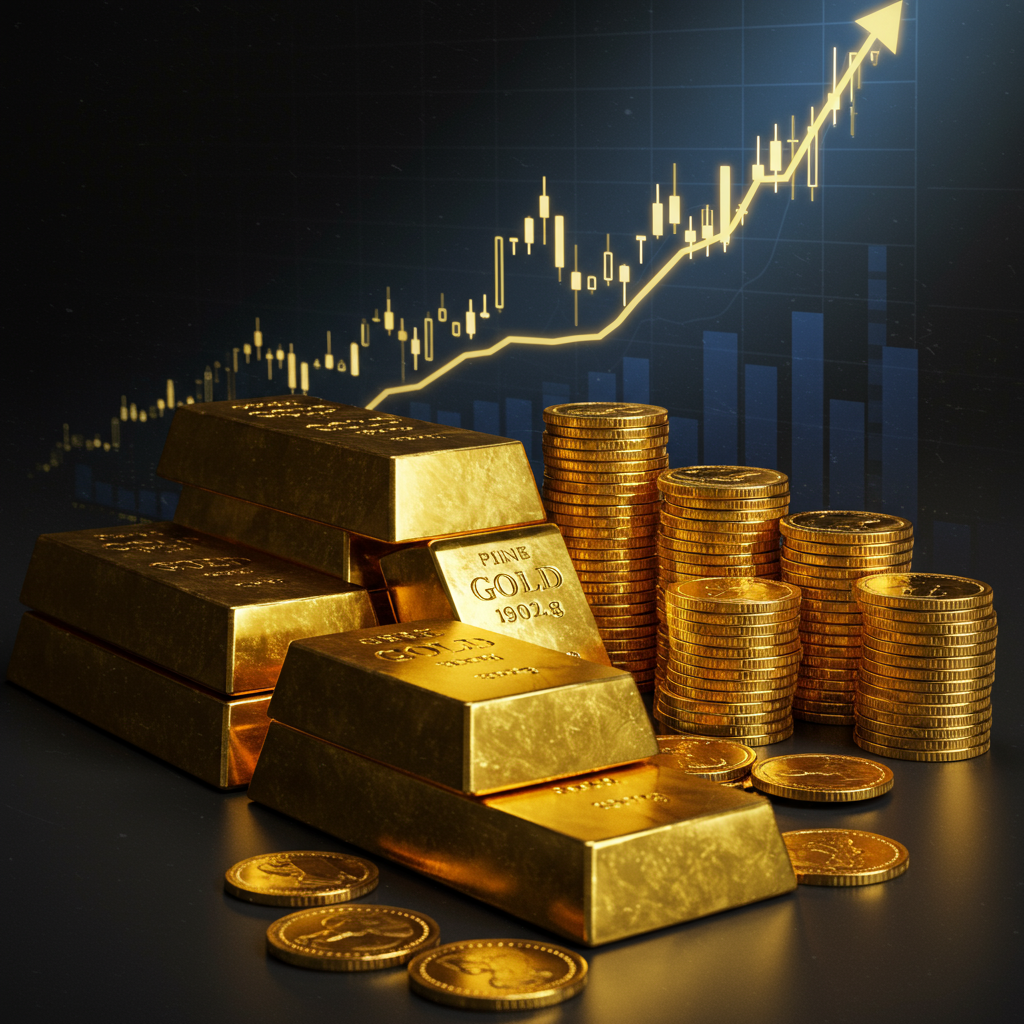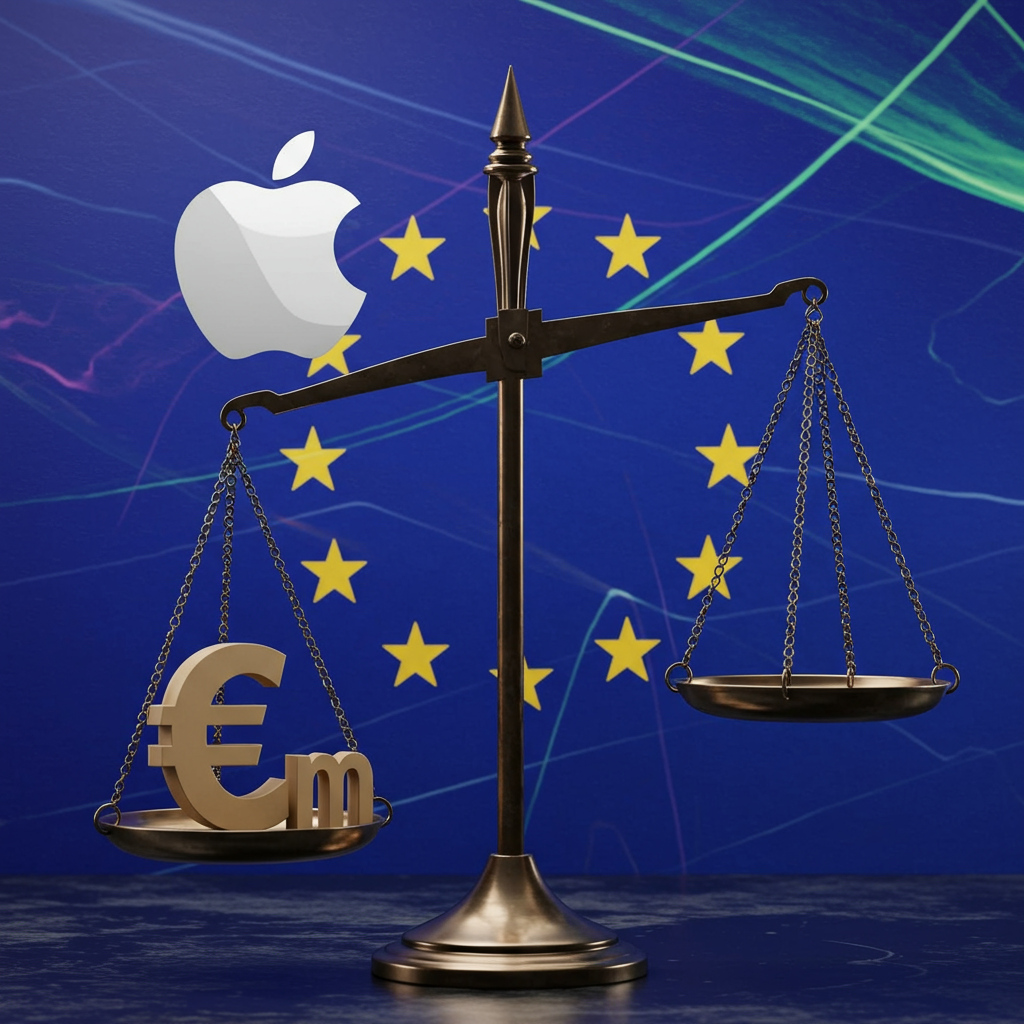Gold, the eternal “safe haven” asset, has once again captured global attention, with its price rocketing to unprecedented highs this week. New York spot gold closed at a staggering $4,326 per troy ounce, briefly touching $4,379.93, while futures soared past $4,344. This remarkable rally marks a 6.7% increase in just the last week and an astounding nearly 60% surge since the start of 2025, when gold hovered around $2,670 per troy ounce. This isn’t just a bump; it’s the largest weekly gain since the 2008 financial crisis, pushing gold’s market capitalization past an astonishing $30 trillion.
What’s behind this meteoric rise? A complex interplay of deepening economic uncertainties, shifting monetary policies, and heightened geopolitical tensions is fueling investor anxiety, driving a frantic rush into precious metals. Understanding these core drivers is essential for anyone tracking global financial markets or considering their investment strategy.
The Unprecedented Surge in Gold Prices
The current ascent of gold prices is nothing short of historic. Bullion, a traditional store of value, has demonstrated a resilience that has surprised many analysts. This year’s performance isn’t isolated to gold either; other precious metals are also seeing significant gains. Silver, for example, has witnessed an even more dramatic percentage jump, up approximately 70% year-to-date, trading over $50 per troy ounce and hitting an all-time high of $54.47. Platinum, too, has outperformed both gold and silver, surging 82.5% this year. These concurrent rallies underscore a broad market sentiment leaning heavily towards tangible assets.
Driving Forces Behind Gold’s Ascent: A Multi-Faceted Analysis
The confluence of several powerful factors has created a “perfect storm” for gold, propelling its value to record levels. These drivers stem from both domestic and international arenas, reflecting a pervasive sense of global uneasiness.
Economic Uncertainty and Safe-Haven Demand
Mounting economic anxieties are arguably the primary catalyst. When traditional markets appear volatile or uncertain, investors instinctively seek refuge in assets perceived as stable and reliable.
U.S. Government Shutdown: A protracted government shutdown has injected significant apprehension into the U.S. economy. Crucial economic data remains delayed, creating blind spots for investors and policymakers. Federal employees grappling with furloughs and unpaid work further deepen the economic apprehension, impacting consumer confidence.
Persistent Trade Wars: President Trump’s ongoing trade disputes, particularly with China, and the imposition of steep new tariffs since early 2025, have strained businesses and consumers worldwide. These protectionist measures have escalated costs, weakened the job market, and fueled inflation. While President Trump recently appeared to walk back threats of 100% tariffs on Chinese goods, briefly easing market jitters, his broader import taxes continue to weigh on global economies and foster consumer pessimism.
Credit Quality Concerns: Recent disclosures from regional lenders regarding problematic loans, some allegedly involving fraud, have shaken markets. These concerns spark broader fears about borrower creditworthiness and the overall health of the U.S. financial system. Investors, consequently, are divesting from perceived riskier assets.
Weakening U.S. Dollar: A softer U.S. dollar typically makes dollar-denominated assets like gold more attractive to international buyers. This inverse relationship often boosts gold’s appeal during periods of currency depreciation.
Monetary Policy and Interest Rate Expectations
The stance of central banks, particularly the Federal Reserve, plays a crucial role in gold’s allure.
Anticipated Rate Cuts: The prospect of lower interest rates makes non-yielding assets like gold more attractive. The Federal Reserve recently cut its key interest rate by a quarter-point and projected two further reductions this year. Strong market wagers for an “outsized” rate cut further amplify gold’s appeal. A dovish Fed stance reduces the opportunity cost of holding gold compared to yield-bearing assets.
Inflationary Pressures: While inflation has remained relatively subdued recently, fears of its resurgence persist, partly due to trade tariffs pushing up costs. Gold has long been considered a hedge against rising inflation, offering a tangible asset to preserve purchasing power.
Geopolitical Tensions and Global Demand
Global instability provides a consistent backdrop for gold’s demand.
Central Bank Buying: Central banks worldwide have been significant buyers of gold, particularly amidst heightened geopolitical tensions. This strategic accumulation is seen as a move towards de-dollarization and a diversification of national reserves.
Ongoing Conflicts: The protracted wars in Gaza and Ukraine, alongside other simmering global flashpoints, contribute to an overarching sense of instability. These conflicts prompt investors and nations alike to seek the perceived safety of gold.
Rising Fiscal and Debt Levels: Concerns about unsustainable national debt and fiscal deficits in major economies erode confidence in fiat currencies. This pushes investors towards gold as a more reliable store of value.
Market Dynamics and Investor Behavior
Specific market trends and shifts in investor sentiment also contribute to gold’s current trajectory.
Robust ETF Inflows: Exchange-Traded Funds (ETFs) dedicated to gold have seen substantial and sustained inflows. These resilient flows indicate strong institutional and retail investor interest, directly pulling prices upward.
Flight from Risky Assets: Investors are actively distancing themselves from riskier assets. This includes the cryptocurrency market, with Bitcoin experiencing a 2.67% downturn, pushing capital into traditional safe havens.
Expert Endorsements: Analysts like eToro U.S. investment analyst Bret Kenwell highlight the sheer scale of gold’s rally, noting “$4,000 an ounce seemed far-fetched… But after a ~50% rally, here we are.” Hedge fund billionaire Ray Dalio consistently advocates for gold as a reliable asset during periods when other investments underperform.
Beyond Investment: Broader Impacts of the Gold Frenzy
The gold boom extends beyond financial portfolios, touching everyday lives and raising critical ethical questions.
Impact on Consumers and the Jewelry Market
The dramatic rise in gold prices has a tangible effect on the jewelry sector. Consumers looking to purchase gold jewelry are experiencing “sticker shock,” as products become increasingly unaffordable. Conversely, many individuals are now keen to ascertain the value of their existing gold possessions, sometimes even resorting to selling family heirlooms to capitalize on the soaring prices. Major retailers like Pandora and Signet have acknowledged these challenging headwinds in their recent earnings calls.
The Debate: Is Gold a Reliable Investment?
While many champion gold as the ultimate “safe haven,” its role in an investment portfolio remains a subject of debate.
Advocates’ Stance: Proponents argue that gold serves as an excellent portfolio diversifier, mitigates risks during economic downturns, and acts as a potent hedge against inflation. They also find comfort in owning a tangible asset that historically holds and often increases in value over time.
Critics’ Reservations: Critics contend that gold is not always the foolproof inflation hedge it’s made out to be, suggesting more efficient alternatives exist, such as derivative-based investments. The Commodity Futures Trade Commission (CFTC) warns investors about the inherent volatility of precious metals. The CFTC emphasizes that while prices rise with demand, “the people who typically profit from precious metals are the sellers” during periods of economic anxiety. Curiously, this gold rally occurs even as stock prices hit record highs, economic growth accelerates, and inflation remains relatively subdued, prompting questions about its true underlying drivers.
The Dark Side: Environmental and Health Consequences
The surging demand for gold also carries severe and often overlooked health and environmental consequences. The global “gold frenzy” has led to a rising demand for mercury, a highly toxic metal. Mercury is crucial for illegal artisanal and small-scale gold mining worldwide, used to separate gold from ore. However, its widespread use results in profound environmental damage, polluting water sources and accumulating in fish and local food chains. This toxic element builds up in human bodies, leading to severe neurological and developmental harm. Even minimal exposure poses serious risks, endangering mining workers and broader communities in affected regions. Reports from countries like Senegal, Mexico, and Peru vividly illustrate the devastating effects of mercury poisoning tied to gold mining.
A Look Ahead: Forecasts and Mining Sector Insights
The future trajectory of gold prices continues to generate significant discussion among analysts. HSBC, for instance, has revised its average gold price forecast for 2025 upwards to $3,455 per ounce, projecting an unprecedented $5,000 an ounce by 2026. Bank of America and Goldman Sachs share similar bullish outlooks, forecasting gold could reach $5,000 per ounce by 2026 and $4,000 per ounce by mid-2026, respectively. These bold forecasts are largely underpinned by expectations of sustained global risks.
This gold boom has had a dramatic impact on the mining sector. Newmont Corporation, the world’s largest gold producer, has seen its stock soar, climbing approximately 150% year-to-date and pushing its market capitalization past $100 billion for the first time. This performance significantly outpaces broader markets and other gold miners, reflecting the company’s leverage to surging gold prices. Wall Street analysts have become increasingly bullish on Newmont, with many raising price targets. However, some market watchers caution that Newmont’s rapid ascent looks “overextended,” suggesting a potential pullback could offer a better entry point. Nevertheless, major investors like BlackRock’s Evy Hambro argue that gold miners remain “ridiculously cheap” relative to their earnings potential at current gold prices.
Frequently Asked Questions
What specific economic factors are primarily driving the current gold price surge?
The gold price surge is primarily driven by a combination of factors creating broad economic uncertainty. These include a prolonged U.S. government shutdown delaying critical economic data, escalating trade wars leading to tariffs and weakening global economies, and growing concerns about credit quality within the U.S. banking sector. Additionally, expectations of further interest rate cuts by the Federal Reserve make non-yielding gold more attractive, while a weakening U.S. dollar enhances its appeal to international investors. Geopolitical tensions also play a significant role.
Where can I find reliable data or resources to track gold price trends and forecasts?
Reliable gold price data and forecasts can be found from several reputable sources. Financial news outlets like Bloomberg, Reuters, and The Wall Street Journal provide real-time pricing and market analysis. Commodity-focused research firms and investment banks such as HSBC, Bank of America, and Goldman Sachs regularly publish detailed reports and price forecasts. Additionally, official sources like the Commodity Futures Trading Commission (CFTC) offer market oversight and warnings. Websites of major gold mining companies like Newmont also provide industry insights.
Given its volatility, should I consider gold a safe investment for my portfolio?
Gold is traditionally considered a “safe haven” asset, valued for its ability to preserve capital during times of economic and geopolitical uncertainty. It can serve as a diversification tool and a hedge against inflation. However, gold is also known for its volatility, with prices rising sharply when demand is high, often benefiting sellers more than long-term holders during such frenzies. Critics argue it’s not always the most efficient inflation hedge, and alternatives exist. Experts caution against putting all your eggs in one basket, advocating for a balanced approach. Consulting a financial advisor for personalized guidance is recommended.
Conclusion
The current record-breaking surge in the gold price is a clear indicator of profound economic and geopolitical shifts underway. While gold continues to attract investors seeking stability amidst deepening uncertainty, its role as an investment should be viewed with a balanced perspective. The allure of a tangible asset, the shield against inflation, and the flight from riskier ventures all contribute to its appeal. However, understanding its inherent volatility and the broader consequences of the gold frenzy is paramount. As markets navigate these turbulent times, staying informed and making strategic decisions based on a comprehensive understanding of these complex dynamics is more crucial than ever.




